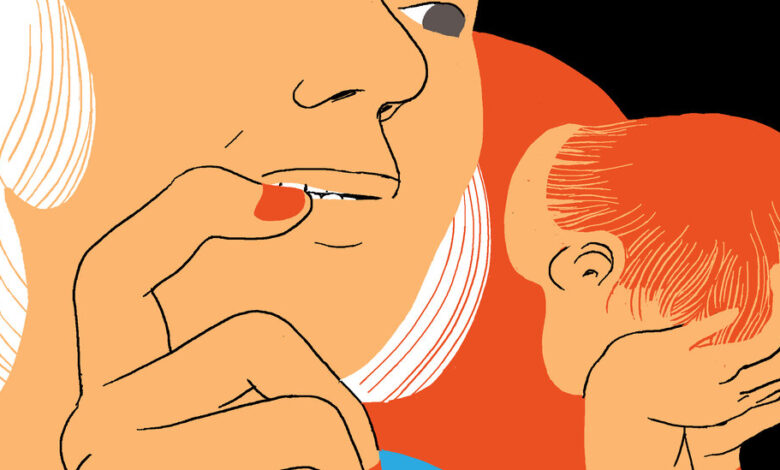Kids’ Mental Health Is a ‘National Emergency.’ Therapists Are in Short Supply.

At the beginning of the year, I started hearing from readers across the country that there were long waiting lists for child and adolescent mental health providers. Many of their kids were really struggling, often with anxiety and depression. When these parents tried to find help, they found there was, in some cases, up to a six-month wait to even get in the door at a therapist’s office for an assessment.
This shortage is not just anecdotal, and in some places it existed before the pandemic produced so much suffering that the American Academy of Pediatrics declared child and adolescent mental health a “national emergency” back in October. Part of the reason for the shortage is that the need for services has increased consistently over time, and the number of child and teen providers has not kept pace.
According to a recent paper published in JAMA Pediatrics, “Between 2016 and 2020, there were significant increases in children’s diagnosed anxiety and depression.” In 2019, Pew Research found that “the total number of teenagers who recently experienced depression increased 59 percent between 2007 and 2017.” Then the pandemic came along. According to a meta-analysis across 29 samples including over 80,000 youths across the globe published in JAMA Pediatrics last summer, “youth mental health difficulties” during the pandemic have “likely doubled.”
In April 2020, David Axelson, the chief of the department of psychiatry and behavioral health at Nationwide Children’s Hospital in Columbus, Ohio, described the severity of the shortage of mental health providers in his hospital’s publication, Pediatrics Nationwide: “Less than half of the 7.7 million children in the United States with an identifiable mental health condition are receiving services from any mental health provider, much less a psychiatrist.”
Earlier this year, the American Psychological Association described a similar shortage of providers: “Only 4,000 out of more than 100,000 U.S. clinical psychologists are child and adolescent clinicians,” Ashley Abramson wrote as part of the A.P.A.’s 2022 Trends Report. School psychologists are also in “short supply,” she notes.
If you’re looking for a provider with a more specific background or cultural competency, resources can be similarly scarce. For example, according to the magazine Insight Into Diversity, data from the American Academy of Pediatrics “shows that only 2 percent of the estimated 41,000 psychiatrists in the U.S. are Black and just 4 percent of psychologists are Black.” “There are no providers in my area that cover both L.G.B.T.Q. issues and issues for the rest of my mental health,” one young person told The Trevor Project, an organization that serves L.G.B.T.Q. youth. And none of this addresses the cost of coverage, a barrier for many families.
Muniya Khanna, the director of the Philadelphia-area Children’s and Adult Center for O.C.D. and Anxiety, told me that the need for therapists has been steadily increasing over the past 20 years, but has exploded over the past two years. “We’re a general population clinic, and we used to get two to three new calls a week,” Khanna said. “Now we’re getting two to three calls per day.” She did note that the increase in need is not all bad — part of it is that there is less stigma about getting help for mental health issues, and there’s more awareness.
Still, the shortage remains, and you can’t just conjure a reserve force of mental health professionals out of thin air. Good mental health training takes years. I wanted to know: What can parents do in the absence of promptly available care? (To be clear: If your child, or anyone, is experiencing a mental health emergency, such as suicidal ideation, that calls for immediate assistance. The new suicide and crisis lifeline number to dial is 988, though, as The Times reported in July, there are some concerns that it, too, may not have adequate staffing everywhere in the country.)
Basics, Books and Behavioral Therapy
While it may be difficult to get a depressed teenager out of bed, good habits matter more than you might think for your child’s mental health, said the psychologist Lisa Damour, the author of “Under Pressure: Confronting the Epidemic of Stress and Anxiety in Girls.”
“Though it is not the same as good psychotherapy, don’t underestimate the power of the basics,” she told me. “Making sure your young person is getting enough sleep, they’re getting enough physical activity, they’re eating a balanced diet. If possible, keep them busy with purposeful activities. These things go further than we sometimes expect.”
There are resources you can use at home, books and online programs, that can help your family. The online resources that come most recommended are often rooted in Cognitive Behavioral Therapy (C.B.T.), which “usually involves efforts to change thinking patterns,” according to the A.P.A. Patricia Frazier, a distinguished professor of psychology at the University of Minnesota, has, along with colleagues, studied the effects of internet-delivered C.B.T. programs (I.C.B.T.) on university students, and found that they were “feasible, acceptable and effective.”
These I.C.B.T. programs tend to be a combination of text, videos and exercises that help explain the roots of anxiety, then encourage users to identify what may be triggering overwhelming feelings, and then offer exercises to help address these feelings. For example, the free app MindShift C.B.T., from the nonprofit Anxiety Canada, allows you to log your daily feelings and then write a short journal entry about the reason behind the feeling. You can also list symptoms you may experience, like racing thoughts, chest tightness or nausea. It gives you a series of tools to use, like guided audio for calm breathing or test anxiety, or “coping cards” that provide affirmations like “Learning to sit with some uncertainty will help me worry less.”
Frazier told me the body of research on the effectiveness of I.C.B.T. programs is “incredibly strong.” She pointed me to this 2019 review in the Canadian Journal of Psychiatry, which found that “I.C.B.T. works and can be as effective as face-to-face therapy.” But it’s worth noting that these studies were done on adults, not on children or teenagers, and that many of them had a trained professional helping to run the I.C.B.T. programs.
Patrick McGrath, an emeritus professor of psychiatry at Dalhousie University in Nova Scotia who has studied the effectiveness of I.C.B.T. in adolescents, told me that parents looking for reputable resources should start with the websites of children’s hospitals and professional organizations. He recommended Magination Press Children’s Books from the American Psychological Association, as well as the “C.B.T. Toolbox” series of books. As for online resources, he said that he refers people to MAP, or My Anxiety Plan, also from Anxiety Canada, which has a multipart online course for teenagers.
McGrath mentioned CopingCat, which includes an online resource called Camp Cope-A-Lot. It’s an animated program that helps teach parents and kids ages 7-13 C.B.T. skills and that was developed by Khanna and Philip Kendall, a professor of psychology at Temple University. She told me that she sees the program as a learning resource, not necessarily as a therapeutic one. The C.B.T. skills she teaches in talk therapy, like identifying triggers of anxiety and using tools like journaling and breathing, “are learnable concepts, and therapists are just better and more trained to teach the concepts,” she said.
If your kid isn’t interested in books or online resources, Khanna said there is value in learning as much as you can about what they’re going through, so you can be prepared if they do come around. “I know there’s going to be a lot of kids who won’t sit down and go through a program because their mom and dad recommended it,” she said. But that doesn’t mean you can’t buy them a book and leave it around, or suggest to a school counselor that they might run a group that can teach some C.B.T. concepts.
Ultimately there will still be many kids who can benefit from in-person therapy. Khanna suggested that if you’re told there’s a monthslong waiting list, keep calling back periodically. While she notes this is an unfair burden on parents, unfortunately there is no solution in the near term. But as you’re waiting for the lists to move, it’s good to know that there are quality resources that can potentially help fill the void.
Want More?
-
In 2021, for The Times, Dani Blum filled us in on therapy TikTok, “where a steady stream of mental health professionals are trying to meet an anxious generation of young people where they are on social media.”
-
This year, for The Times, Matt Richtel spent more than a year interviewing adolescents and their families for his series, the “Inner Pandemic,” about the mental health crisis among American teenagers.
-
In May, I wrote about how it’s been a dispiriting couple of years for Gen Z, and why they’ve earned their cynicism.
Tiny Victories
Parenting can be a grind. Let’s celebrate the tiny victories.
If you want a chance to get your Tiny Victory published, find us on Instagram @NYTparenting and use the hashtag #tinyvictories; email us; or enter your Tiny Victory at the bottom of this page. Include your full name and location. Tiny Victories may be edited for clarity and style. Your name, location and comments may be published, but your contact information will not. By submitting to us, you agree that you have read, understand and accept the Reader Submission Terms in relation to all of the content and other information you send to us.



